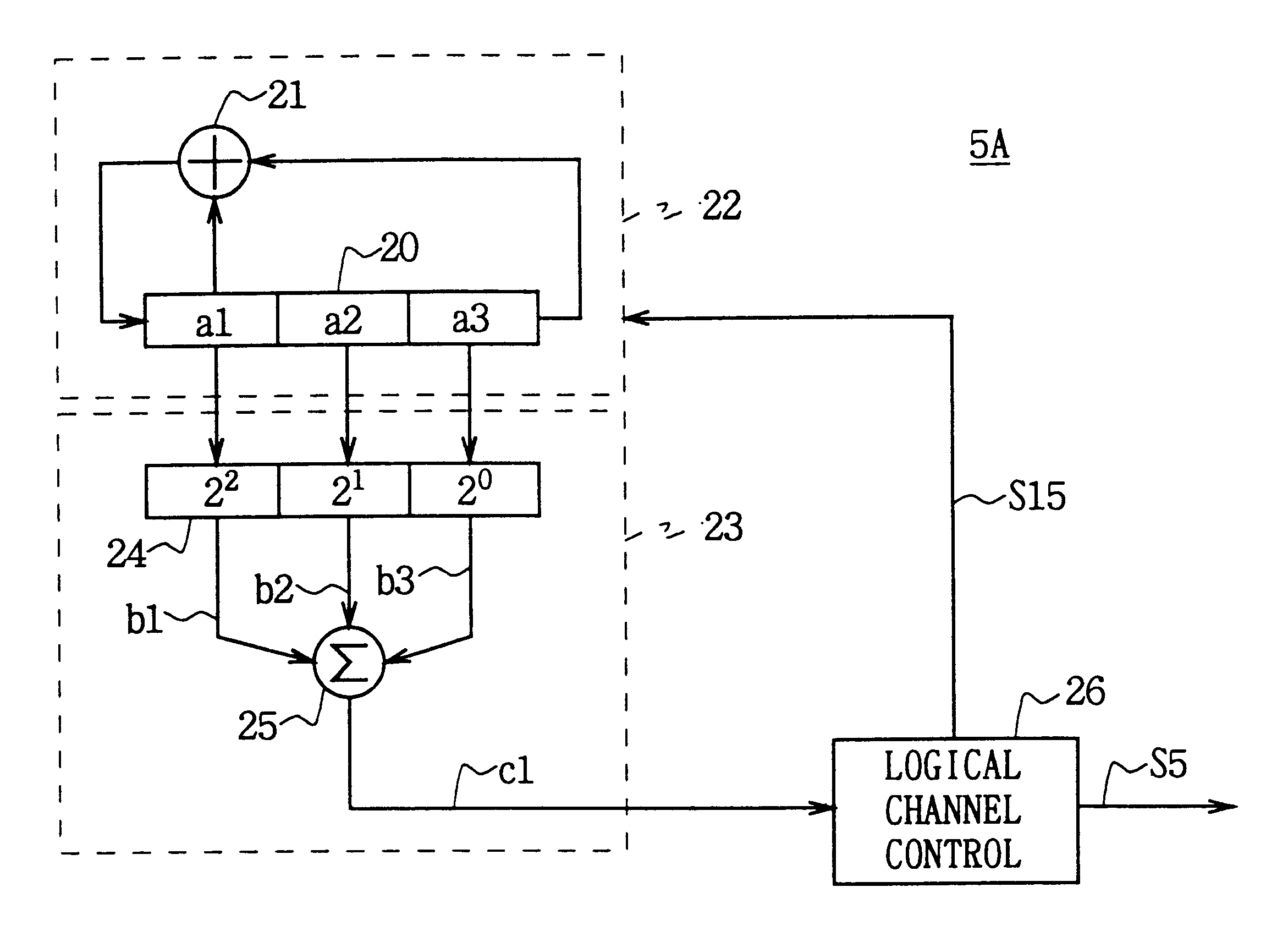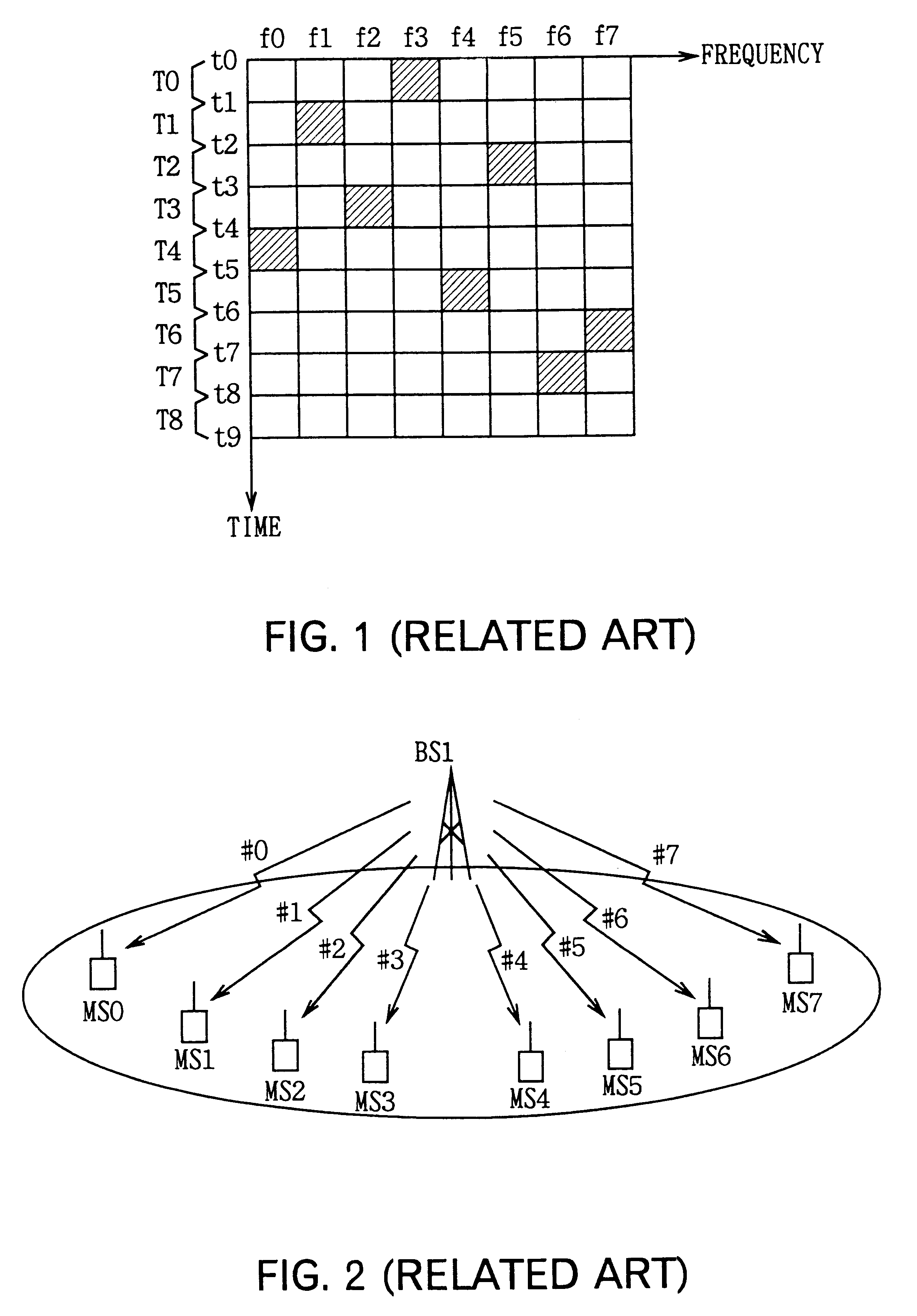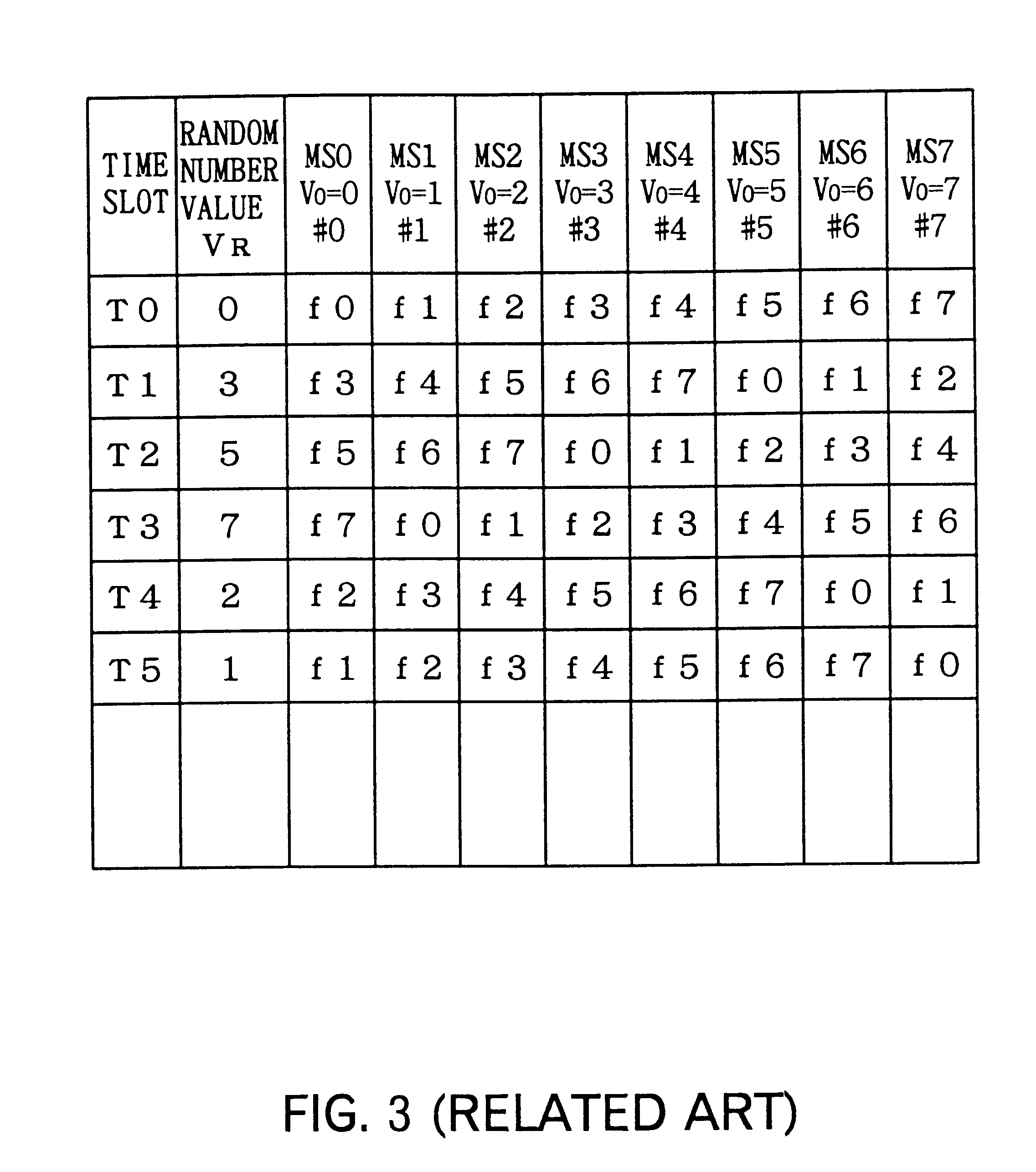Physical channel assignment method and transmitter
a physical channel and assignment method technology, applied in multiplex communication, wireless commuication services, phase-modulated carrier systems, etc., can solve the inconvenience of always assigning the same logical channel to the adjacent frequency channel, fixed interference with adjacent channel, and communication cannot be performed through logical channel #1. , to achieve the effect of simple configuration
- Summary
- Abstract
- Description
- Claims
- Application Information
AI Technical Summary
Benefits of technology
Problems solved by technology
Method used
Image
Examples
first embodiment
(1) First Embodiment
(1-1) Entire Configuration of Cellular Radiocommunication System
Referring to FIG. 6, reference numeral 1 generally designates a cellular radiocommunication system to which the present invention is applied. The cellular radiocommunication system serves to perform a communication by connecting a base station 2 to a communication terminal unit 3 through a radio line. In this case, the base station 2 includes a transmitter 4, a channel control part 5 and a receiver 6. Further, the communication terminal unit 3 also includes a receiver 7, a channel control part 8 and a transmitter 9. The base station 2 and the communication terminal unit 3 perform a communication therebetween using these circuit blocks.
The transmitter 4 of the base station 2 gives a prescribed modulation process to data to be transmitted. The transmitter transmits a transmitting signal obtained as a result through frequency channels instructed by channel information sent from the channel control part ...
second embodiment
(2) Second Embodiment
In the above first embodiment, although an explanation is directed to an example in which one of the logical channels #1 to #7 generated is fixedly assigned to the communication with an arbitrary communication terminal unit 3, logical channels #1 to #7 which are assigned to a communication with a communication terminal unit 3 are further changed sequentially in terms of time according to a second embodiment, hence frequency channels used for the communication are further randomized.
For this purpose, according to the second embodiment, the logical channels #1 to #7 generated in the above described first embodiment are specified as logical subchannels and the logical subchannels #1 to #7 are combined together in terms of time so that logical channels ##1 to ##7 are formed. Then, one of the logical channels ##1 to ##7 is assigned to a communication with an arbitrary communication terminal unit 3.
The configuration of a channel control part for realizing the above de...
third embodiment
(3) Third Embodiment
In the above first and second embodiments, while an explanation is given to the examples in which the channel assignment is carried out by using the M series codes generated by the M series code generator, according to a third embodiment, channel assignment tables in which the adjacent channel interference is equally distributed are previously provided and values looked up from the channel assignment tables are used to perform a channel assignment.
According to the third embodiment, logical channels are initially hierarchically represented by first and second logical subchannels and actual frequency channels are also hierarchically represented by first and second physical subchannels. For example, it is assumed that there exist 16 frequency channels f1 to f16 and 16 logical channels #1 to #16 are formed with the frequency channels f1 to f16 based on a frequency hopping scheme.
In this case, the logical channels #1 to #16 are noted by a hierarchical representation o...
PUM
 Login to View More
Login to View More Abstract
Description
Claims
Application Information
 Login to View More
Login to View More - R&D
- Intellectual Property
- Life Sciences
- Materials
- Tech Scout
- Unparalleled Data Quality
- Higher Quality Content
- 60% Fewer Hallucinations
Browse by: Latest US Patents, China's latest patents, Technical Efficacy Thesaurus, Application Domain, Technology Topic, Popular Technical Reports.
© 2025 PatSnap. All rights reserved.Legal|Privacy policy|Modern Slavery Act Transparency Statement|Sitemap|About US| Contact US: help@patsnap.com



